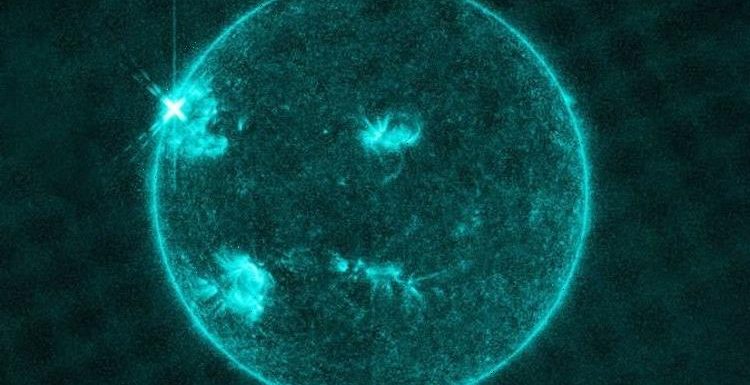
NASA observatory spots flurry of solar flares
When you subscribe we will use the information you provide to send you these newsletters. Sometimes they’ll include recommendations for other related newsletters or services we offer. Our Privacy Notice explains more about how we use your data, and your rights. You can unsubscribe at any time.
The “significant” solar flare erupted on July 3 and was the first X-class event recorded since September 2017. As the powerful burst of energy escaped from the Sun, some of the radiation struck the planet and caused a temporary blackout over the Atlantic Ocean. Although not harmful to life, the pulse of X-ray radiation interacted with the planet’s magnetic field and tampered with some electronic instruments and radio frequencies.
An astronomer in Norway who runs a space weather observatory reported all of his instruments briefly went haywire.
Rob Stammes was quoted by the astronomy website Space Weather, saying: “This is the first in many years. The magnetic disturbance is especially rare.”
The X-flare likely caused a radio burst and surge of electrical currents in the ground that affected the astronomer’s instruments.
According to the US space agency NASA, the solar flare erupted on Saturday evening, July 3.
NASA’s Solar Dynamics Observatory (SDO), which tracks the Sun 24/7, photographed the intense flash at 3.29pm BST (10.29am EDT).
The event was classified as an X1.5-class flare, with “X” denoting the most powerful class of flares.
The following number, meanwhile, indicates the flare’s strength, so an X3-class flare would be twice as intense as yesterday’s event.
NASA said: “Solar flares are powerful bursts of radiation.
“Harmful radiation from a flare cannot pass through Earth’s atmosphere to physically after humans on the ground, however – when intense enough – they can disturb the atmosphere in the layer where GPS and communications signals travel.”
Solar flares and solar storms can cause tech blackouts, disrupt satellite operations and even – in the most severe cases – cause power surges.
According to Space Weather, the flare erupted from the newly formed sunspot AR2838.
Sunspots are temporary blotches on the Sun’s photosphere that are cooler than other parts of the Sun.
They appear as black spots and are caused by magnetic lines getting all tangled up.
Space Weather said: “X-flares are the strongest kind of solar flare.
“They are typically responsible for the deepest radio blackouts and the most intense geomagnetic storms.
“This is the first X-flare of young Solar Cycle 25. More are in the offing.”
During the last solar cycle, Cycle 24, a total of 49 flares erupted from the Sun.
Astronomers expect this cycle to be at the very least just as active.
Solar cycles denoted a period of solar-magnetic activity the Sun goes through every 11 years when the Sun’s magnetic field flips.
In other words, every 11 years, the Sun’s poles swap places.
Each cycle starts with the so-called solar maximum when the Sun has the least sunspots.
As the activity picks up, the cycle peaks during solar maximum when the Sun has the most sunspots.
Space Weather added: “We can therefore expect dozens more X-flares as the Sun approaches Solar Maximum in the year ~2025.”
Source: Read Full Article



